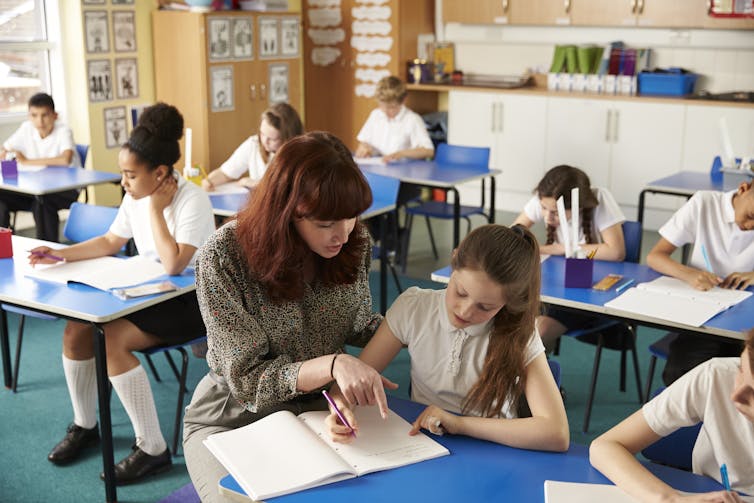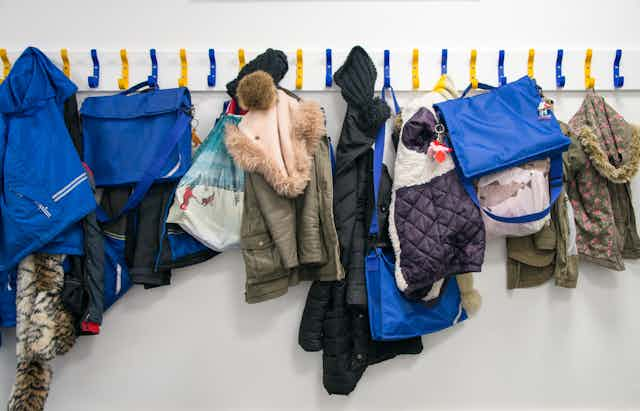Neurodiversity is an elaborate word for all the different atypical ways in which individual brains can function. It covers both learning difficulties, such as dyslexia, and developmental conditions, including attention deficit hyperactivity disorder (ADHD).
These conditions are more likely to be diagnosed in school-aged children than in later life. It is at school that the differences in how certain children function can become more apparent: the way one child might find it harder than others to grasp new concepts or another might have trouble regulating their emotions.
Over recent years, through research, TV, film, books and government strategies, there has been a greater awareness and understanding of autism. Concurrently there has been a ninefold increase in autism diagnoses over the past 20 years, according to a recent study.
Other neurodiversity conditions, though, have not seen the same kind of rise in diagnoses. But this is not to say that they are less prevalent. Many cases are incorrectly diagnosed, or not diagnosed at all.
According to Department for Education statistics on special educational needs in England, over 20% of children with such needs are labelled as having moderate learning difficulties. Yet as a developmental psychologist, working in schools in England, I have assessed over a thousand children but have rarely diagnosed children with moderate learning difficulties. Each child has had a range of specific needs that require targeted support, such as those apparent in dyslexia, or difficulties related to coordination, the senses, attention or language.
Nevertheless, research shows that the label “moderate learning difficulties” is often used in an overgeneralised way in schools as well. When teachers assess children without the involvement of a specialist, there is no reliable way of distinguishing between moderate learning difficulties and specific learning difficulties such as dyslexia.
This suggests that a large proportion of children in England could have a neurodiversity that remains undiagnosed. Without a specific diagnosis, these children will not get the support they need. There is no informed and targeted plan in place to help them in their schooling.

How conditions are diagnosed
In childhood, diagnoses are generally carried out by specialist teachers, education psychologists, paediatricians and other health professionals. In order for a diagnosis to be accurate – and each child to be given the exact support they need – health workers and teaching staff need in-depth knowledge.
The fact that we use an umbrella term – neurodiversity – to designate these different, yet highly prevalent conditions, demonstrates the extent to which they can either seem similar or actually overlap.
Children with autism and dyspraxia often have similar coordination difficulties, for instance. Likewise, a dyslexic child might also have attention difficulties. Equally, 60% of children with reading difficulties and 80% of children with ADHD are reported to meet the criteria for having both dyslexia and ADHD.
All of the different difficulties a child might have will make it harder – in ways specific to them – to learn and understand how they feel. This is why health workers and educators, whose job it is to ensure the wellbeing and education of our children, need to understand each neurodiversity in all its specificity.

Lack of training
Research shows that these professionals are frequently untrained. And where they are trained, it is usually in one specific condition. Dyslexia is seen as the purview of specialist teachers; dyspraxia is diagnosed by occupational therapists; and paediatricians and psychologists have the final say on autism and ADHD.
The more teachers, doctors and professionals know about a particular neurodiversity, the more they can recognise the features. However, where they know more about one than another, they run the risk of mistaking the symptoms a child displays for those of a condition they do not have.
Oftentimes only a fraction of a child’s needs are investigated, and a diagnosis can be incorrect or incomplete. And if a child does not fit a specialist’s skillset, their getting a diagnosis then involves another professional, another budget, another year.
When on the one hand, teachers and doctors are not trained to recognise and understand neurodiversity, and on the other, specialists are so narrowly specialised, children are not assessed in a holistic way. The overlap between various conditions is not unravelled; the whole child – the full gamut of their individual needs – is not considered.
If specialists were comprehensively trained in all neurodiversity conditions, they would be able to piece together a complete picture of each individual child’s needs. This would prove invaluable in ensuring that the child receives the care and support they need both in education and emotionally.

